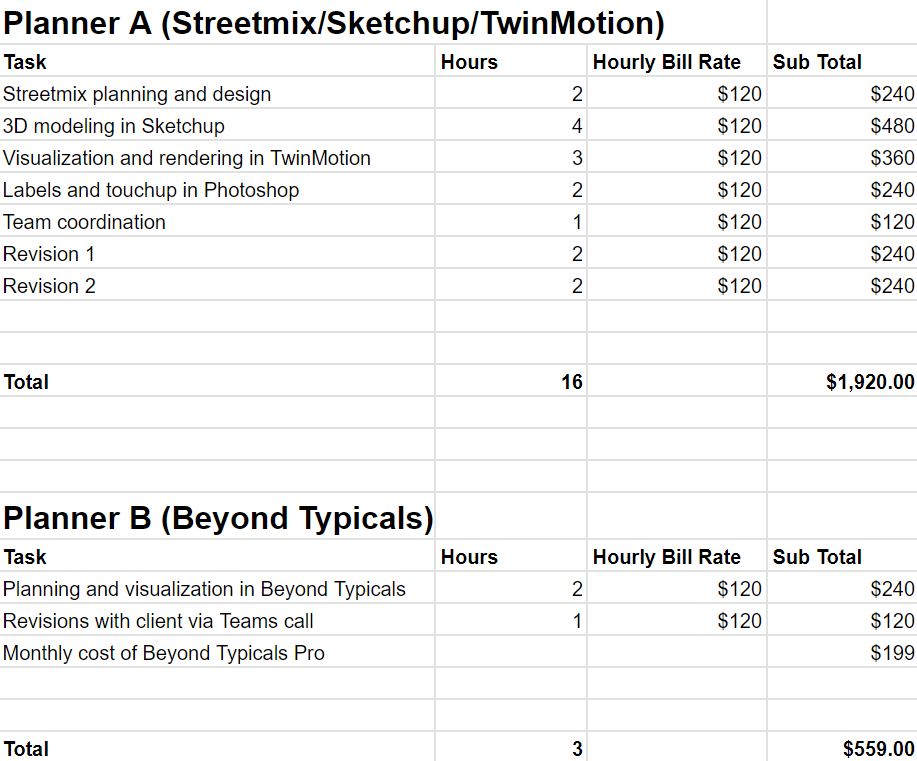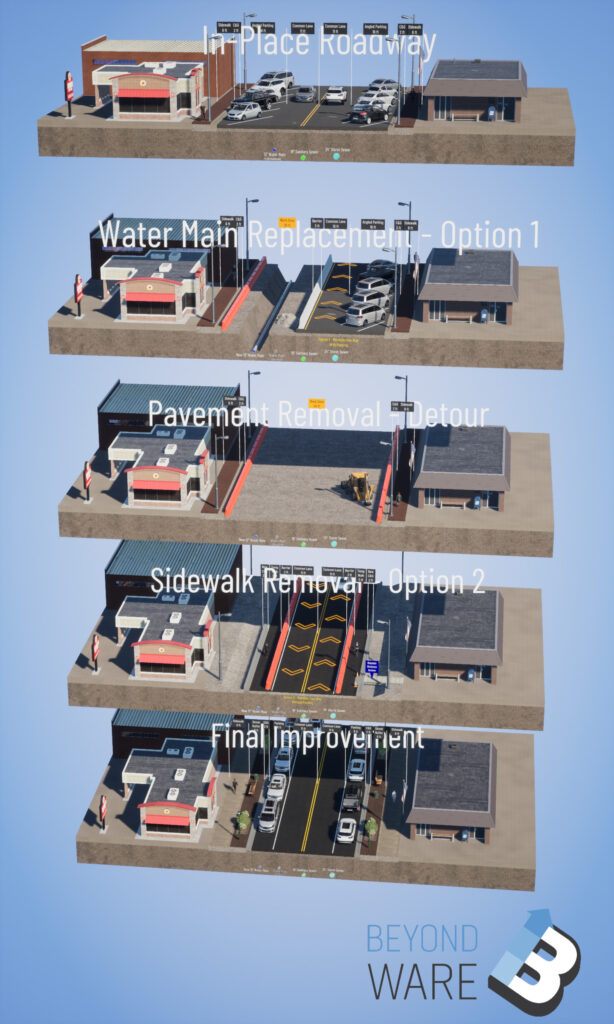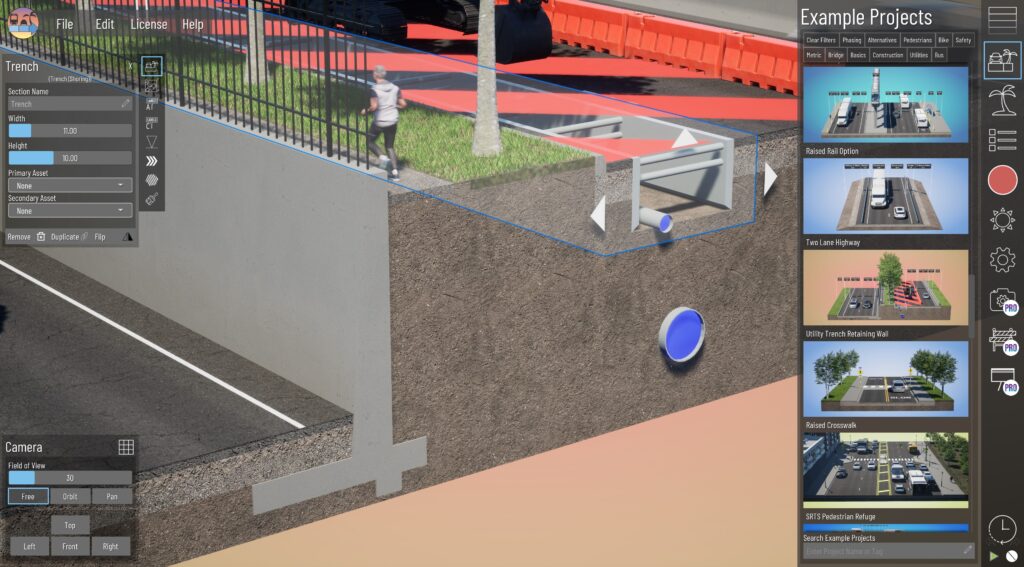Introduction
As potential customers of Beyond Typicals look to purchase this new tool for more efficient planning and visualization, many of them naturally evaluate the overall value of the product, especially against other alternatives. Part of the challenge- and the potential- of Beyond Typicals is that nothing else like it exists, so there is little to compare with. A product like this has never been in most organization’s budgets, so the evaluation process for Beyond Typicals is often an entirely new venture.
To assist in this process, we’ve developed this resource. Following is a case study showing how an organization can frame calculating the value of a Beyond Typicals subscription as well as other vital information about alternatives and interactive design and visualization in the industry. We invite anyone reviewing this article to copy, customize and share this information with others in an effort to better understand the value made possible by using the interactive design and visualization of Beyond Typicals.
Theoretical Case Study
Both Planner A and Planner B were tasked with creating 3D typical section alternatives for an urban transportation project. They were required to develop several project alternatives, incorporate revisions based on client feedback, and produce renders for a public meeting.
Planner A’s Approach: Planner A used a combination of Streetmix, Sketchup, and TwinMotion for the project, with Photoshop for post-processing. He spent a significant amount of time creating and visualizing the 3D typical sections, as these tools required manual integration and lacked a streamlined workflow. As a result, Planner A experienced delays in delivering the initial designs.
When it came time for revisions, Planner A faced further challenges. He needed to make changes in each software individually, which consumed additional time and made the process prone to errors. After making revisions, Planner A had to spend even more time creating renders for the public meeting, further extending the project timeline.
Planner B’s Approach: Planner B chose to use Beyond Typicals for the same urban transportation project. With its library of more than 100 pre-made drag-and-drop sections and 3D assets, she was able to create several project alternatives in less than an hour. The integrated design and visualization capabilities of Beyond Typicals allowed Planner B to work quickly and efficiently.
When revisions were needed, Planner B worked directly with the client on a Teams call, using the real-time 3D visualization capabilities of Beyond Typicals to make changes on the fly. This collaborative approach reduced the time spent on revisions and ensured that the client’s feedback was accurately incorporated. She then used Beyond Typicals’ built-in rendering capabilities to produce high-quality visuals for the public meeting in a timely manner.
Assumptions and cost Breakdown
In this scenario, Planner A uses a variety of software applications for the final renders as well as time for revisions. We will not include the subscription costs of these applications, as they may be used for other services offered by the firm. We will also not include the cost of the PC hardware, as it would be necessary for both Planner A and B. Additionally, for simplicity, we are assuming Planner A is doing all the work, although some of these tasks may be done by others with different hourly bill rates.
While the costs associated with Planner B include a monthly subscription to Beyond Typicals, they are still substantially lower due to the efficiency of the software and the lack of need to use other software applications.

Building upon the case study above, imagine that the transportation planning firms in the example complete 12 projects like this over the course of a year. This gives us $23,040 for costs associated with the visuals created by Planner A and $6,708 for Planner B. The difference- and time and cost savings- between these numbers grows even more when factoring in additional projects and Beyond Typicals users, especially across larger firms.
Even though Beyond Typicals is still relatively new in the industry (launched in 2022), the results of this analysis align with what we are seeing with our customers. Many early users find themselves using the software on more and more projects for various purposes, including planning, design, visualization, coordination, public outreach, and so on. When it comes time for renewal, many of them are asking about our options for multiple license purchases, so they can expand upon the value, savings, and efficiency they are finding with one or two licenses. For this reason, we have recently released enterprise plans for easier expansion of Beyond Typicals within organizations, along with other licensing purchase options.
Beyond Typicals Alternatives
A brief review of similar workflows is valuable in a full analysis of what specifically Beyond Typicals is now bringing to the industry that hasn’t existed before.
Utilizing sections for the design and visualization of transportation is a tried-and-true practice that has been in use for decades. Prior to Beyond Typicals, options included 2D section creators like Streetmix and similar alternatives that are free and quick to use but limited in features and realism, or more complex workflows that may produce realistic results but are expensive, time-consuming, and difficult for creating revisions. You can read our full consumer guide on section creation alternatives here.
Beyond Typicals offers a first-of-its-kind interactive 3D section creator that combines the ease of use of the 2D web creators with the realism offered by professional 3D visualization workflows. Additionally, the ease of use allows anyone to jump in with little training and create high-quality visuals in a fraction of the time.

A Qualitative Look at The Value of Interactive Design
In the transportation planning industry, effective communication and efficient decision-making are essential for successful project outcomes. Beyond the quantitative cost savings demonstrated above, qualitative advantages of interactive design and visualization include:
Accelerating Decision-Making: Interactive design and visualization tools enable stakeholders to quickly explore different scenarios and make informed decisions. By leveraging real-time 3D visualization capabilities, professionals can better assess the impact of design choices, expediting the decision-making process and leading to more efficient project timelines.
Enhancing Stakeholder Engagement: The immersive nature of interactive design and visualization tools allows stakeholders to fully comprehend the intricacies of a transportation planning project. This level of engagement fosters a stronger consensus among team members, clients, and the public, reducing the likelihood of costly revisions and ensuring that all parties are satisfied with the project’s direction.
Reducing Project Costs: Interactive design and visualization tools offer a more cost-effective approach to transportation planning by minimizing delays and facilitating timely decision-making. By streamlining the design process and enhancing communication, these tools help to prevent costly missteps and keep projects on budget.
Increasing Project Flexibility: Interactive design and visualization tools, like Beyond Typicals, provide a dynamic platform for transportation planning, allowing users to easily adapt designs to changing project requirements, site constraints, or stakeholder feedback. This adaptability is invaluable in the fast-paced world of transportation planning, where seamless integration of new ideas and concepts is crucial.
Gaining a Competitive Edge: Engineering firms, public agencies, and contractors that adopt interactive design and visualization tools are better equipped to meet the demands of modern transportation planning. By offering an accessible, cost-effective, and efficient solution for real-time 3D visualization, Beyond Typicals gives users a competitive advantage in a rapidly evolving industry. This includes the oft-cited case of using Beyond Typicals for winning project proposals bringing in much-needed work for engineering and planning firms.
Conclusion
While Beyond Typicals is impressive new technology and often described as ‘fun to use,’ most customers find the value in the time and cost savings it offers, especially vs other alternatives.
Because the needs of every organization differ so much, the value of Beyond Typicals will come down to the specific individuals and workflows of any firm, agency or contractor looking to adopt its use. Fortunately, we offer free 30-day trials, monthly subscriptions and product demos to help ensure that Beyond Typicals fits any workflow before moving to organization-wide adoption. However, as we watch more existing customers return for more subscriptions or enterprise options, we are confident that most engineers and planners in the transportation design industry will quickly see that the costs associated with this software will quickly be surpassed by the significant time and cost savings it offers.

